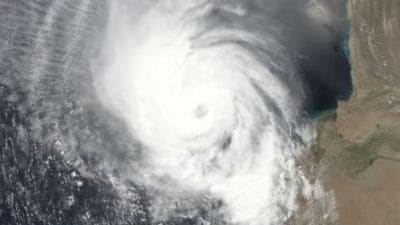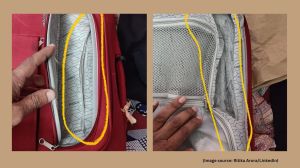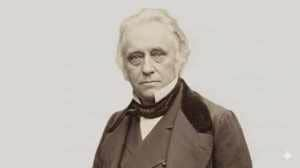Shrinking the SLR
Physics makes our luggage heavy,melts polar ice caps and conspires to make the toast land jelly-side down.
Physics makes our luggage heavy,melts polar ice caps and conspires to make the toast land jelly-side down. Physics also explains why you cant take professional-quality pictures with a small camera. Big,bright,beautiful photos require big sensors and big lenses to shine on the chips. So were stuck with two camera categories: pocket ones that take mediocre pictures and big heavy black ones (SLRs) that take stunning photos but require a neckstrap or,ideally,a wheelbarrow.
Because both ends of that spectrum are already teeming with camera models,the manufacturers are eager to differentiate in hope of finding new markets. This month,Nikon and Canon are going for a category that,so far,is sparsely populated the one right in the middle. Call it the mini-SLR.
Nikons new D5000 and Canons PowerShot SX1 IS look very similar. The bodies are sized and shaped identically and they weigh roughly the same. Each camera can capture high-definition video; each even has a mini-HDMI jack for connecting to your hi-def TV. Both have a flip-out,swiveling screen on the back which lets you shoot at high,low and side angles.
Despite these similarities,though,these cameras approach the middle from opposite ends. Nikon has tried to consumerise an existing SLR; Canon has tried to SLR-ize an existing consumer camera.
The Nikon D5000 is a genuine SLR. It takes interchangeable lenses,its eyepiece lets you peer out through the lens itself,it has an enormous light sensor inside,and it has no shutter lag (the delay after you press the button).
In fact,you might mistake the D5000 for Nikons more advanced,more expensive D90. The D5000 has the same superb 12.3-mp sensor,the same sensor-shaking mechanism to eliminate dust spots,and the same 11-point autofocus system,which makes it easier to compose focused shots. Like most SLRs these days,the D5000 also has Live View mode. It makes focusing slower,but it means that you can frame your shots using the screen. The D90 was the first video SLR; the D5000 inherits that hi-def goodie,too.
But heres where things get crazy: Nikon has packaged all of these professional features into a much smaller,lighter camera thats obviously aimed at amateurs. For example,the new camera is loaded with scene modes to make the thing less intimidating to novices.
As on other recent low-end Nikon models,the D5000 also makes photography easier to understand by displaying a visual representation of the actual aperture (lens opening) inside as it grows and shrinks. The screen also indicates your shutter speed both graphically and with a fraction. The D5000,in other words,is such a mix of high and low-end that Nikons representatives actually asked my opinion on how to describe the thing. Heres my suggestion: its a professional camera trapped in a consumer-cams body.
A few perks of the D90 are missing on the D5000. You lose the ability to use some older Nikon lenses. The camera doesnt communicate with wireless flash attachments. There are some consolations,though. A new Quiet Mode slightly muffles the clack of the shutter. Focusing before you shoot a movie is faster,although,tragically,you still cant change focus while filming a movie.
The upshot here is that the D5000 produces spectacular,sharp,fast,brilliant photos in all kinds of light. It has the same expensive guts of Nikons higher-end models in a small,rugged,lovingly designed,user-friendly bodyand it is a home run.
You cant say the same for Canons new PowerShot SX1. It is an evolution of the PowerShot S IS series that arrived in 2004. Unlike most cameras,for example,the SX1 can change focus and even zoom while youre filmingthe lens motors are so quiet,the excellent stereo microphones dont pick up its sound. It even has separate shutter buttons for video and photos,so you can snap a still in the middle of recording video.
What made the SX1 such a hotly anticipated model,though,is its light sensor. It is a CMOS chip,the type thats found in SLRs,including Canons popular Rebel series. That doesnt do anything for photo quality,but it gives the SX1 several features that its predecessors lacked,like a very high burst mode (4 frames a second) and full high-definition movies. All that and a wide-angle,20X optical zoom lens (thats not a typo).
Unfortunately,the SX1 simply doesnt take great pictures. Its a feature list in search of a camera. In bright sunlight,youll adore the thing. It is fast,it is easy,it is always ready,and the photos are sharp and saturated. But as the light dims,so does the quality. Noise (graininess) begins to appear even in outdoor overcast shots (say,ISO 400)and when the cameras software tries to iron out that graininess,you get soft edges and lost detail.
The SX1 also has,in place of a glass eyepiece,an electronic viewfinder (a tiny screen inside the eyepiece). That is okay if that little screen has excellent resolution,but this one is so coarse,you actually see the pixels.
It is so unlike Canon,which makes the worlds best small cameras,to introduce a model with these compromises. It is so cool to have a 20X zoom available,a dedicated button for switching between widescreen and standard modes,all those manual controls and the option to use standard AA batteries in a pinch. But you still deserve a camera with a sensor that is up to the light-gathering task.
What the world really wants,of course,is a whopping big sensor like the D5000sin a shirt-pocket camera. Unfortunately,you probably wont find a chip like that in a camera much smaller than the D5000 itselfat least not until theres an amendment to the laws of physics.
DAVID POGUE,NYT




- 01
- 02
- 03
- 04
- 05



























